Macro Calculator
This free, easy-to-use macro calculator gives you your optimal macronutrients and calories. It’s a weight loss or muscle gain calculator for both women and men.
Combine with macro counting or flexible dieting to reach your goals faster.
How to get leaner and stronger?
Our comprehensive macro-based fat loss program shows you how. Learn more
How do macros work?
The foods we eat are made up of three macros (macronutrients). These are carbohydrates (carbs), protein, and fat.
Chicken is high in protein but has no carbs; rice is high in carbs but has very little fat or protein. The three macronutrients provide the body with energy and raw materials for growth and repair.
By calculating the appropriate daily calorie amount for you, we can then break this down into the best macronutrient ratios to achieve weight loss.
Basic steps for macro counting
- Enter details into the calculator
Make sure to choose the correct goal. - Take note of your calories and macros
These will be the targets you are aiming for each day. - Track your macros
Use an app or pre-plan your meals. - Measure results
Don’t use basic weight scales.
Use proper body composition scales (we recommend Renpho) to measure fat and muscle mass changes.
What is a good macro ratio for fat loss or muscle gain?
Your macros should be based on your Total Daily Energy Expenditure (TDEE) and goals.
The calculator defaults to the best macro ratio proven to work for most people.
This ratio is:
- 30% fat
- Protein is 0.65 grams per pound of body weight,
- The remainder is carbs.
Depending on your goal, this will be either a calorie deficit or a surplus.
You can go further and make more adjustments: Perhaps you’re an extreme endomorph and do better with fewer carbs. Or perhaps you have one kidney and need to eat less protein.
You can fine-tune your results with a bit of math. See how to change your macros here.
What is a good protein ratio?
Rather than a percentage, proteins are based on your body weight. Our calculator has three settings:
- Moderate adjusts the ratio to 0.65 grams per pound of body weight.
This is appropriate for sedentary individuals or people with higher body fat percentages. - High is for active people with moderate strength training and an average body fat percentage.
- Maximum will set the ratio to 1 gram per pound.
This amount is good for bodybuilding and gaining muscle mass. You must be doing intense training.
Find out how to fine-tune your protein ratios when counting macros
Fat macro ratio
Set fat at 30% of daily energy expenditure.
Most people do very well with this amount of fat. See more about choosing the best macro fats. Because of high-fat diets like keto, many people are now eating more fat than they need to.
Carbohydrate macro ratio
Once you’ve calculated protein and fat, the remainder of your daily calories should be from carbohydrates.
Carbs fuel your body and workouts – and are the body’s preferred energy source.
If you are coming from a low-carb background, this may seem high. However, according to respected nutritional research, this is a moderate amount of carbs.
If you are eating according to your TDEE, the notion that carbs cause weight gain or stop fat loss is incorrect.
Using as a Calorie Deficit Calculator
As a weight loss calculator, this tool establishes a safe calorie deficit only.
The Lose option puts you in a 20% calorie deficit, promoting safe, steady weight loss.
The best macro ratio for body recomposition
If you want to recompose your body (lose fat and gain muscle simultaneously), then use the body recomposition calculator.
Macro ratio for maintenance
The Maintain button shows you the macro levels to maintain your current weight.
This is great if you have lost weight and don’t want to gain it back.
Macro ratio for muscle gain
The Gain button puts you in a 20% calorie surplus.
The macro breakdown is designed to build muscle fast in conjunction and must be combined with a comprehensive weight training program.
Underweight people can also use it.
TIP: Try starting with the maintenance goal and gradually increasing calories if you want lean muscle gains.
Calculating macros using your body fat percentage
The calculator uses your body weight to determine calories and macros.
However, you can obtain superior results by using your body fat percentage. The calculator allows you to choose which method: Normal for body weight, Lean Mass for fat percentage.
When to choose the Lean Mass Formula
If you are lean (have a low body fat percentage), choose the Lean Mass formula and enter your body fat %.
If you are classified as obese and have a lot of weight to lose, the lean mass formula is superior. You can read more about macro counting and obesity.
Help? Calculate your ideal body weight or get an assessment of your body fat percentage.
Why the difference? Muscle cells burn more calories than fat cells, so the more accurately we measure this, the better your results will be.
How to calculate macros per meal
You can break this down into meals once you’ve calculated your daily macros in the calculator.
Choose from 2 to 6 meals daily to see the macro ratio you can track for each meal. For some people, this is easier, but for others, this is too much detail.
Do what works for you.
Meal Plans
See a 5-day macro-based meal plan. It includes three meals and two snacks per day.
Macro calculator activity level settings
A higher activity level means a higher daily calorie goal.
For example – if you maintain your weight at 2,000 calories per day, adding vigorous daily exercise means you need more calories to maintain your weight.
If you are sedentary and trying to lose weight, adding exercise will increase your daily calorie goal.
The idea seems counter-intuitive, but more energy is required to fuel your workouts. More workouts lead to increasing metabolism; therefore, more fat is burned!
Undereating is one of the leading causes of the weight loss plateau.
So many of our clients previously “hit the wall” with dieting. They would continually reduce calories, stop losing fat, and gain weight when they eat a little more.
Macro counting defeats this by prescribing the right food and calorie levels.
Which activity level do I choose?
- Sedentary: Just regular everyday activity like a bit of walking, a couple of flights of stairs, eating, etc.
- Light: Any activity that burns 200-400 calories (females) or 250-500 calories (males) over your sedentary amount.
- Moderate: Any activity that burns 400-650 calories (females) or 500-800 calories (males) more than your sedentary amount.
- Extreme: Any activity that burns more than 650 calories (females) or more than 800 calories (males) in addition to your sedentary amount.
Other options for determining your calorie burn
- Use our calories burned calculator – it accurately assesses over 380 activities.
- Use a fitness tracker – like a Fitbit or Apple Watch (note that they can overestimate calorie burn).
- Use a suitable app – like MapMyFitness
Why should I eat more when I exercise more?
High physical activity not fueled with enough calories will lead to muscle catabolism (breakdown of muscle fiber).
This lack of nutrition could stall your weight loss, so eat up if you love to exercise!
I’ve got my macros – now what?
Once you’ve identified your target daily macros, you must determine the macros in all your foods.
By tracking them daily, you can reach your recommended macro targets that encourage fat loss, muscle gain, or whatever your goal may be.
You can learn more about the macro counting system and the flexible dieting philosophy. Many people use an app like Myfitnesspal to track macros.
For more specifics on what to eat – see a sample macro meal plan or a list of macros for familiar foods.
View article sourcesSources
- Mifflin, M. D., St Jeor, S. T., Hill, L. A., Scott, B. J., Daugherty, S. A., & Koh, Y. O. (1990). A new predictive equation for resting energy expenditure in healthy individuals. The American Journal of Clinical Nutrition, 51 (2), 241-247. Link
- McArdle, W. D., Katch, F. I., & Katch, V. L. (2010). Exercise physiology: nutrition, energy, and human performance. Lippincott Williams & Wilkins. Link
- Jequier, E. (1994). Carbohydrates as a source of energy. The American journal of clinical nutrition, 59(3), 682S-685S.
- Lemon, P. W., Tarnopolsky, M. A., MacDougall, J. D., & Atkinson, S. A. (1992). Protein requirements and muscle mass/strength changes during intensive training in novice bodybuilders. Journal of Applied Physiology, 73(2), 767-775. study abstract link
- Grundy, S. M. (1999). The optimal ratio of fat-to-carbohydrate in the diet. Annual review of nutrition, 19(1), 325-341. abstract
- Conlin, L.A., Aguilar, D.T., Rogers, G.E. et al. Flexible vs. rigid dieting in resistance-trained individuals seeking to optimize their physiques: A randomized controlled trial. J Int Soc Sports Nutr 18, 52 (2021). https://doi.org/10.1186/s12970-021-00452-2
2,104 Comments


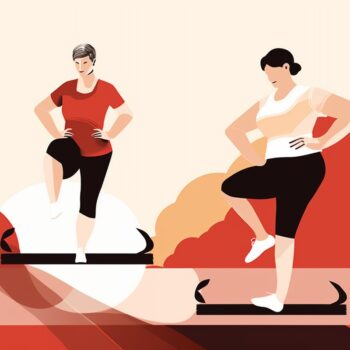 Menopause Macro Calculator
Menopause Macro Calculator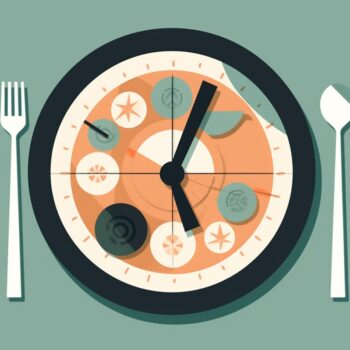 Intermittent Fasting Calculator
Intermittent Fasting Calculator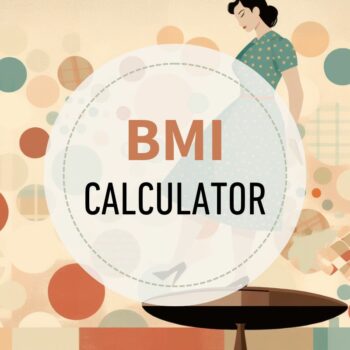 BMI Calculator
BMI Calculator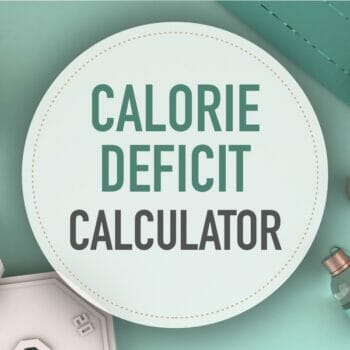 Calorie Deficit Calculator
Calorie Deficit Calculator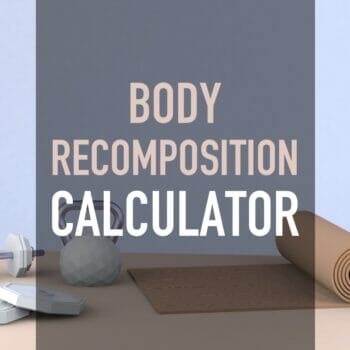 Body Recomposition Calculator
Body Recomposition Calculator
Am I supposed to be using my lean body weight or my actual weight I calculated it using your other calculator ?
Hi Eva, Lean body mass is appropriate for fit individuals with low body fat percentage.
my body fat is 21.5 % so can I use that
No, it wouldn’t be suitable for you.
So I should keep using the regular formula ?
Should i adjust my calories according to my fit bit? Im set up at 2800 calories but sometimes i burn more than that and my fitbit adjusts my myfitnesspal app to get those extra cals.
Hi Saul, Yes you should eat according to your exercise level, but FitBit has been known to overestimate. You should crosscheck it with an app like MapMyFitness and see if the two agree.
Hi, I’m off to holiday in about 6 weeks and I’m looking to lose 7 Pounds because I still have some stomach fat I want to get rid of. I want to choose the ‘Lose 10%’ category because I still want to build muscle while losing some weight but I’m afraid that if I choose that option, I won’t lose the fat in time, and if I choose the ‘Lose 20%’ category, I’ll be able to lose the fat but won’t be able to build muscle along with it. I’m doing high intensity weight training 5 times a week for the 6 weeks. I will obviously continue after my holiday but for now I need fast results. Which do you recommend? Or should I calculate a 15% kcal deficit and work with those numbers?
Hi Kai, I would recommend the 20% if you want to lose a little more than a pound a week. You may not gain much muscle but you should be able to maintain your current mass.
Greetings TED,
Love your website thank you for the valuable info. I have a question, I have been counting macros and lifting for the past 2 years. I had an online coach who helped with diet and training program. When I began I was able to loose the weight with no difficulties then started bulking phase. When we tried to lose the fat gained during bulking my body will not respond. Have been trying to loose weight for the past 7 months we went to a huge calorie deficit 50 g carbs per day with no success maybe 1-2 lbs lost if that. Went up on Macros again to see if this helped and nothing – did really gain weight with the increase in macros maybe 1 lbs if that. I am currently in taken about 1000 calories a day — 5-1 and 121 lbs (short).. So my trainer did not know what to do.. He was clueless and I am stubborn and want to know why I can’t lose the weight. Got all my hormones checked. I am good! Any ideas or suggestions ??? Thank you. Raysa
Hi Raysa, You’re welcome. Sorry for your difficulty and frustration. That’s why I promote lean gains as it’s better in the long run and doesn’t mess with you metabolism by bulking and cutting. I would recommend taking some time off and just eat at you maintenance TDEE and macros for a while and after a month or two work on lean gains. Check out my book, which outlines the process. https://healthyeater.com/macro-solution
Thank you for the reply. Just purchased your ebook. Should I keep protein at 1gram/1lb or at 0.825grams/lbs.. Thank you again
Thanks Raysa! Keep your protein high.
Greetings Ted
When increasing calories when you have been in a deficit is it good to do reverse dieting slowly increase your calories by 100 per week to prevent excessive weight gain? I didn’t see this in your ebook
Thanx!
Hi Raysa, I would love to keep answering your questions and provide the help you are seeking but it would have to be within the confines of our members only support forum. If you want to add this service, let me know and I’ll email you the upgrade link. I hope you can understand as it isn’t fair to the people who paid a little extra for my advice and support.
Please send me the link. Completely understand.
im having the hardest time tailoring meals to fit within my macros… does anyone reccommend an app for this??? I find myfitnesspal confusing.
Hi Mike, you could try MyMacros+
The ebook explains everything in detail
I just did the macros calculator and I’m a bit confused because I thought it takes into consideration your energy level but you said you also have to determine how many kcals you are burning. Does that mean you would subtract that from your total kcals?
Hi Pamela, It does this for you but you have to determine how many calories you burn during your exercise in order to determine which exercise level to select in the calculator. The calculator then factors this into your TDEE.
If I am breastfeeding but still want to loss weight should I just select the light activity option?
Hi Cheryl, Please see this article of ours: https://healthyeater.com/pregnancy-breastfeeding-flexible-dieting-iifym
Good Afternoon Ted,
I am a 22 year old woman who weighs 113 pounds and is 5’1.
I just calculated my marcos using your calculator and they came out to be 2252 total calories, 93g protein, 329g carbs, and 63g fat.
I am trying to gain muscle, but still carry a bit of fat around my lower belly area. If I were to gain, do you think it would help the fat or should I just consider cutting?
Thank you. 🙂
Hi Maria, With your stats you really want to try to achieve lean gains and with the gain setting you’ll probably also store some fat. I outline how to achieve this in the lean muscle edition of my flexible dieting book. Please consider getting it. https://healthyeater.com/macro-solution
On the high protein setting, Is it correct in telling me that I should intake 1 gram per body weight? I’ve seen other calculators where they say to intake 1 gram per pound of lean mass. I weigh 225 (male) and consuming 225 grams of protein seems like a lot!
Hi Mark, If you have a fair bit of excess fat to lose then you should use a lower protein setting. You don’t need that much.
Hi! I have been trying to figure out my macros- I found some that I have been trying for a month and I don’t feel like it’s working carbs 160, protein 135, and fat 50. Most days I’m between 1450-1550 calories. I am wondering if my calories are to low. I have done some more looking into different calculations and they are coming up with around 200 carbs but I feel like that is to high. I am wanting to lose weight. I am 25 year old female weigh 150 at 5’6″ and I am pretty active- workout 5-6 days a week at a high intensity.
Hi Carissa, Your TDEE and macros have to be adjusted according to the activity you are doing. If you don’t give your body enough energy, weight loss will stall. have a look at this article: https://healthyeater.com/eat-to-lose-weight and please check out my book: https://healthyeater.com/macro-solution
Based on my height, weight, body fat percentage, and daily activity
levels (not counting lifting), I calculated that I needed 1743 calories
per day. Macro breakdown C = 151g (34.6%), P = 176g(40.4%), F = 48g
(25%). I used the high protein option because I Olympic weightlift 5/7
days a week. How much should my caloric intake and macro nutrient intake
change for rest days? Thanks!
Hi Melissa, If you’re trying to lose weight you can choose sedentary for rest days.
Thanks! I’d leave the protein adjustment as high for rest day calculation correct?
yeah that’s a good idea since on rest days your muscles are building and repairing.
I had a little bit of confusion when picking an activity level. I’m curently relatively sedentarty but I want to restary a workout routine I was doing several weeks ago that had me weightlifting 5 times a week and adding some HIIT cardio in there too. So should I go ahead and pick moderately active/highly instead of the sedentary since I’m going into this lifestyle being active?
Hi Mary, Yes, the exercise level should correspond to how active you are when you begin the flexible dieting lifestyle.